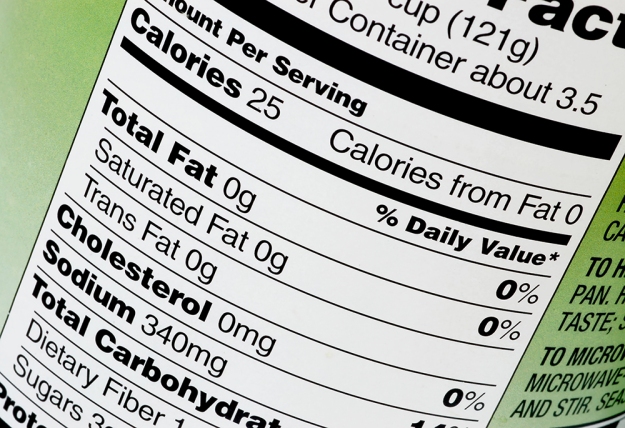Walking up and down the grocery aisle, you can’t help but be bombarded by the thousands and thousands of packaged foods labels on the shelves. If there’s a food you want, there are probably 10 different brands. At least 10, if not 20.
Even if it’s basically the same product, but by different companies, the food labels are never the same. Why not? If they’re all regulated by the Food and Drug Administration, then how can they be so different?
That’s because manufacturers have found loopholes in the system to get you to pick their tasty choice over the other guy’s. Deceptive.
But, you can learn how to read food labels to get to the truth. Here are just 5 of the ways manufacturers mislead you to buy their products:
Calorie count – If a nutritional label states that it has 400 calories per serving, it could actually have as many as 500 instead. How can that be? The FDA allows for labels to be off by at least 20% before they get involved. And with hundreds of thousands of products to monitor, the FDA has very little resources to check everything or enforce violations. They basically leave it up to the manufacturer.
Serving size – Even a small snack that seems barely enough for one often contains several servings. And the calories are based on servings per package, with many small packages containing up to 4 servings. At about 115 calories per ounce – that’s only about 11 potato chips – you can easily chomp down 450 calories in no time.
Trans fats – Saying a product has 0 grams of trans fat might not be true. The FDA allows foods to be labeled ‘trans fat free’ and still have up to half a gram of trans fat before serving. With only 2 grams of trans fat being the recommended daily maximum, it doesn’t take much to be over that. Check the nutritional label to see if any form of partially hydrogenated oil is on the list. If so, it contains trans fat.
Whole grains & real fruit – This nutritious combo sound great together. The problem is the FDA does not regulate how much a product must contain of either to have them on the label. Just a minimal amount of either – often as little as 5% of either – and they’re allowed to post it all over the package. Often the other ingredients are just enriched white flour and corn syrup – neither are any good.
Natural – If ever there were a word that was overused in marketing, it would be this word. When you see the word ‘natural’, you think of organic and chemical free. Hardly. The FDA actually has no definition for the word natural. If the ingredients exist in nature, and basically everything does, then manufacturers can call it natural. Even foods made of genetically modified organisms – generally referred to as GMO – can be called natural.
As much as you might want to believe that food producers have your best nutritional interests in mind, they don’t. Remember, advertising is meant to entice you to buy a product. If a product sounds too good to be true, it probably isn’t good for you.
Sources:
http://www.fda.gov/aboutfda/transparency/basics/ucm194879.htm
http://healthyliving.msn.com/nutrition/7-ways-nutrition-facts-and-food-labels-might-trick-you#7
http://www.prevention.com/food/healthy-eating-tips/food-labels-can-trick-consumers
Related Article

Join the Discussion
0 Comments